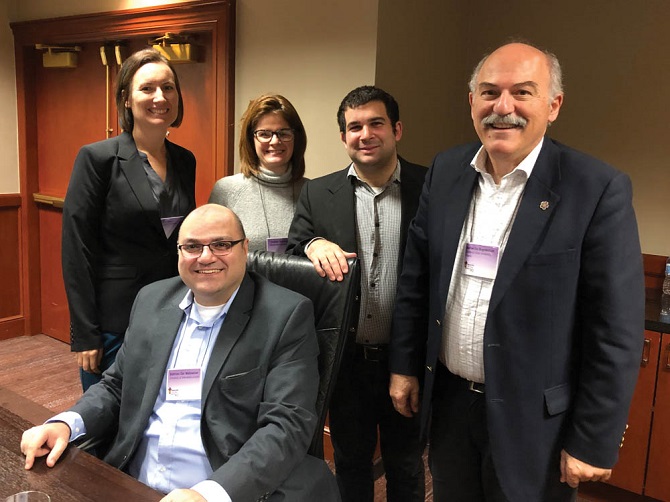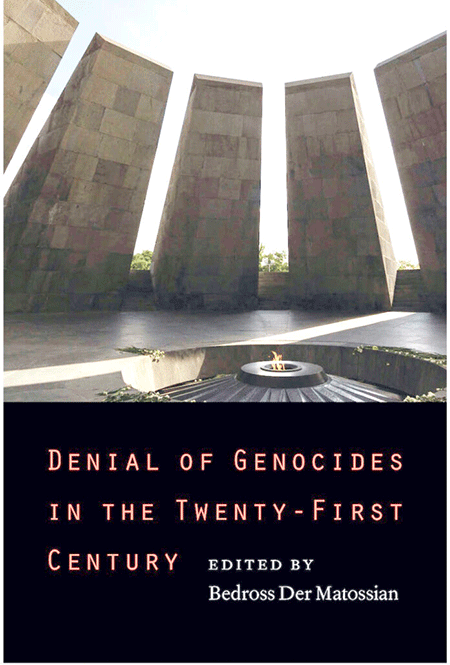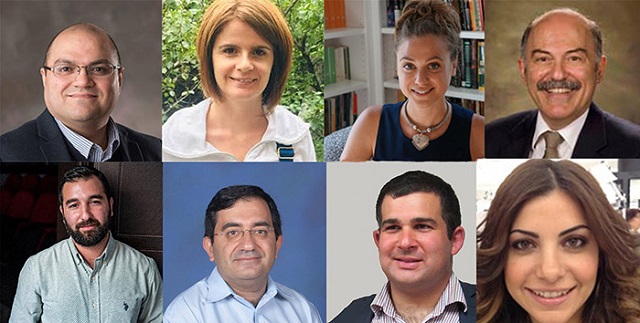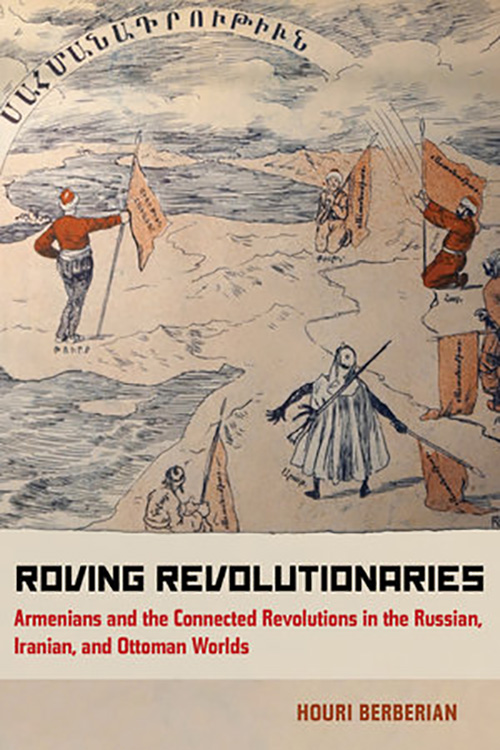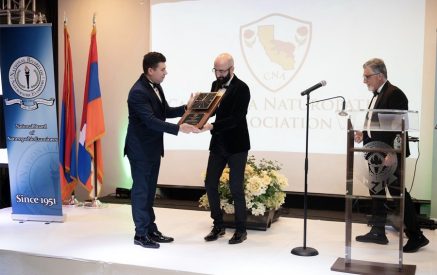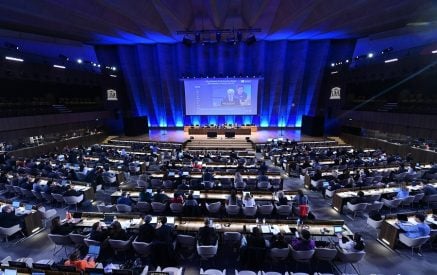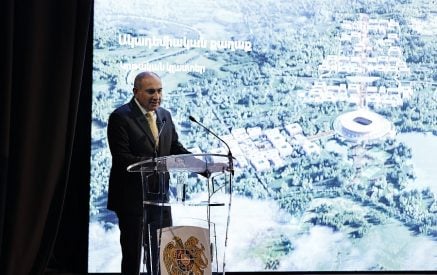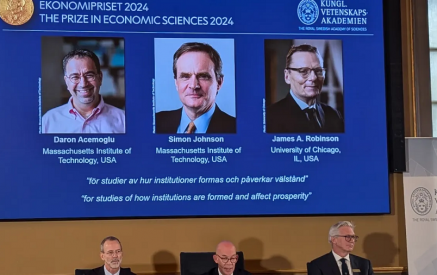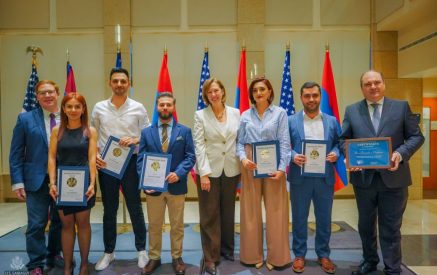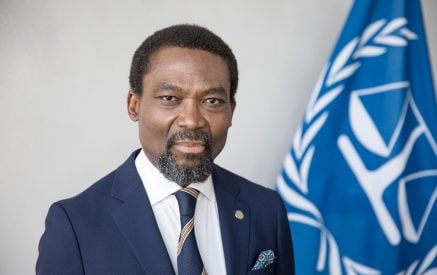The Armenian Weekly. NEW ORLEANS, La—The Society for Armenian Studies (SAS) held its 45th annual member meeting and sponsored panels at the 53rd Annual Conference of the Middle East Studies Association (MESA). The first day of the broader MESA meeting, SAS President Bedross Der Matossian welcomed members of the SAS, updating them on the past year’s activities of the Society. These include concluding an agreement with Brill Publishers for future publications of the Journal for the Society of Armenian Studies (JSAS) and new Research and Travel Grants for Graduate Students.
Der Matossian was pleased to announce that membership in SAS has increased 35 percent in the past two years, with a substantial number of new graduate student members. Earlier that morning, the SAS Executive Council, including newly elected members Tamar Boyadjian and Christopher Sheklian, met to discuss future initiatives and strategic planning for the organization.
“It is a great honor to work with such a qualified team. The addition of Prof. Tamar Boyadjian and Dr. Christopher Sheklian to the Executive Council will enhance our future projects and advance the new vision of SAS,” commented Der Matossian.
In addition to holding the Executive Council and Annual Membership Meeting, the Society for Armenian Studies sponsored two panels during the MESA conference.
Read also
The first panel, “Medieval Armenian Entanglements,”, was organized by SAS Vice-President Alison Vacca. The panel was held in honor of Kevork Bardakjian for his service to the field of Armenian Studies. All the panelists and those present in the audience toasted Dr. Bardakjian, who was in attendance. Papers included, “Hell Hath No Fury: Sexual and Communal Relations in Twelfth-century Arts‘akh,” by Sergio La Porta and “The Women and the Foreigners of Abbasid Armenia, a Study of Sasna Crer,” by Alison Vacca.
The second panel, a round table discussion on the “Organization of Sources and Connected Histories: The Case of Ottoman-Armenian Studies,” was held later that afternoon. The panel was organized by SAS Secretary Dzovinar Derderian with Bedross Der Matossian as the chair and discussant. A lively discussion on the connections of Ottoman-Turkish and Armenian Studies took place between the panelists Yasar Tolga Cora, Dzovinar Derderian, Anush Suni and Murat Cankara.
At the annual meeting, Der Matossian announced the winners of the Society for Armenian Studies “Der Mugrdechian Best Book Award” for 2019. Two winners were chosen: Houri Berberian, for her book Roving Revolutionaries: Armenians and the Connected Revolutions in the Russian, Iranian, and Ottoman Worlds and Heghnar Zeitlian Watenpaugh, for her book The Missing Pages: The Modern Life of a Medieval Manuscript from Genocide to Justice. Additionally, the Fall 2019 recipients of the Society for Armenian Studies Research and Travel Grants for Graduate Students were announced: Irem Gülersönmez, Sose Grigorian, Varak Ketsemanian, Garine Palandjian, Megan Dixon, and Leah Marangos.
The Society for Armenian Studies represents scholars and teachers in the field of Armenian Studies. It publishes the peer-reviewed Journal of the Society for Armenian Studies, available on its website. For more information about the Society or membership, please contact SAS President Bedross Der Matossian at [email protected].
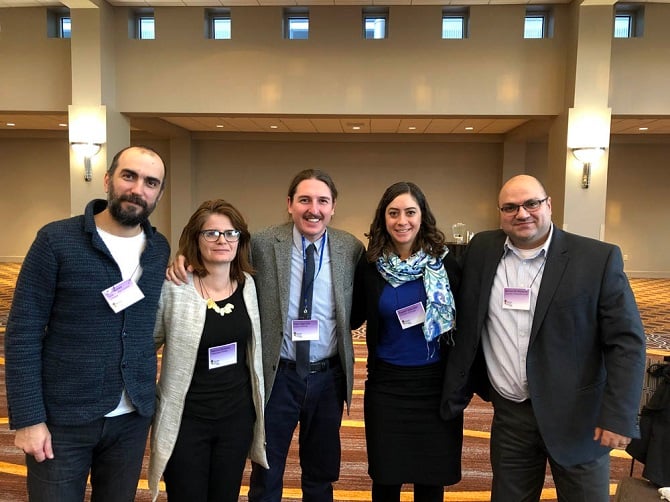
Left to right: Murat Cankara, Dzovinar Derderian, Yasar Tolga Cora, Anoush Suni, SAS President Bedross Der Matossian. (Photo: Barlow Der Mugrdechian)
Main photo: Left to right: SAS Vice-President Allson Vacca, SAS President Bedross Der Matossian, SAS Secretary Dzovinar Derderian, SAS Advisor Christopher Sheklian, SAS Treasurer Barlow Der Mugrdechian. (Photo: Sergio La Porta)



















































